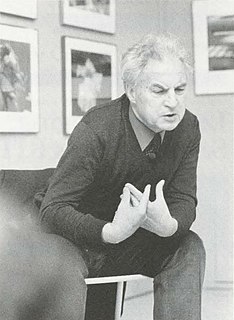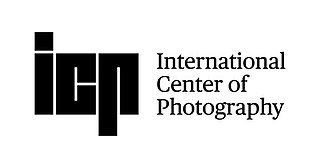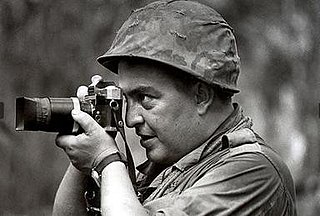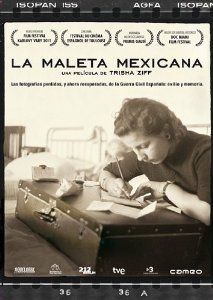
Robert Capa was a Hungarian-American war photographer and photojournalist as well as the companion and professional partner of photographer Gerda Taro. He is considered by some to be the greatest combat and adventure photographer in history.

Magnum Photos is an international photographic cooperative owned by its photographer-members, with offices in New York City, Paris, London and Tokyo. It was founded in 1947 in Paris by photographers Robert Capa, David "Chim" Seymour, Maria Eisner, Henri Cartier-Bresson, George Rodger, William Vandivert, and Rita Vandivert. Its photographers retain all copyrights to their own work.

James Nachtwey is an American photojournalist and war photographer.

Photojournalism is journalism that uses images to tell a news story. It usually only refers to still images, but can also refer to video used in broadcast journalism. Photojournalism is distinguished from other close branches of photography by having a rigid ethical framework which demands an honest but impartial approach that tells a story in strictly journalistic terms. Photojournalists contribute to the news media, and help communities connect with one other. They must be well-informed and knowledgeable, and are able to deliver news in a creative manner that is both informative and entertaining.

Ernst Haas was an Austrian-American photojournalist and color photographer. During his 40-year career, Haas bridged the gap between photojournalism and the use of photography as a medium for expression and creativity. In addition to his coverage of events around the globe after World War II, Haas was an early innovator in color photography. His images were disseminated by magazines like Life and Vogue and, in 1962, were the subject of the first single-artist exhibition of color photography at New York's Museum of Modern Art. He served as president of the cooperative Magnum Photos, and his book The Creation (1971) was one of the most successful photography books ever, selling 350,000 copies.

David Seymour, or Chim, was a Polish photographer and photojournalist.

The International Center of Photography (ICP), at 79 Essex Street on the Lower East Side of Manhattan, New York City, consists of a museum for photography and visual culture and a school offering an array of educational courses and programming. ICP's photographic collection, reading room, and archives are at Mana Contemporary in Jersey City, New Jersey. The organization was founded by Cornell Capa in 1974.

War photography involves photographing armed conflict and its effects on people and places. Photographers who participate in this genre may find themselves placed in harm's way, and are sometimes killed trying to get their pictures out of the war arena.

David Carl Turnley is an American photographer, winner of the Pulitzer Prize, two World Press Photos of the Year, and the Robert Capa Award for Courage.

Gerta Pohorylle, known professionally as Gerda Taro, was a German Jewish war photographer active during the Spanish Civil War. She is regarded as the first woman photojournalist to have died while covering the frontline in a war.

David Douglas Duncan was an American photojournalist, known for his dramatic combat photographs, as well as for his extensive domestic photography of Pablo Picasso and his wife Jacqueline.

Cornell Capa was a Hungarian American photographer, member of Magnum Photos, photo curator, and the younger brother of photo-journalist and war photographer Robert Capa. Graduating from Imre Madách Gymnasium in Budapest, he initially intended to study medicine, but instead joined his brother in Paris to pursue photography. Cornell was an ambitious photo enthusiast who founded the International Center of Photography in New York in 1974 with help from Micha Bar-Am after a stint of working for both Life magazine and Magnum Photos.

Horst Faas was a German photo-journalist and two-time Pulitzer Prize winner. He is best known for his images of the Vietnam War.

The Falling Soldier is a black and white photograph by Robert Capa, claimed to have been taken on Saturday, September 5, 1936. It was said to depict the death of a Republican Iberian Federation of Libertarian Youth (FIJL) soldier, during the Battle of Cerro Muriano in the Spanish Civil War. The soldier in the photograph was later claimed to be the anarchist militiaman Federico Borrell García.
Regards is a monthly French Communist news magazine published in Paris, France.
John Godfrey Morris was an American picture editor, author and journalist, and an important figure in the history of photojournalism.

The Mexican Suitcase is a 2011 documentary film directed by Trisha Ziff. It tells the story of over 4000 film negatives created during the Spanish Civil War by photographers David Seymour, Gerda Taro, and Robert Capa. The film follows the journey of the photos from their disappearance at the beginning of World War II to their rediscovery in 2007. Interviews also cover political and personal stories from the era. According to Documentary magazine:
The Mexican Suitcase brings together three narratives: the suitcase, the exile story and how people in Spain today address their own past, 30 years after transition. The Mexican Suitcase addresses the power of memory, and asks, “Who owns our histories?”
The history of Spanish photojournalism, developed since the beginning of twentieth century, was closely tied to the cultural, historical and political discourse of the time. The Spanish colonisation of Morocco (1912–1956) shaped the photojournalist practices such that, a plethora of photographs were focusing on reaffirming Spain's Islamic past and portraying the ethnic, social and cultural ties of Spain to North Africa. Technical advancements in photography led to a rising interest in photography as publishers began complementing their texts with photographs. During the Civil War (1936–1939) photojournalism served as an objective transcription of the realities of the conflict between the Republican and Nationalist forces and influenced public opinion abroad.
Kate Mangan was a British artist, actress and journalist.















